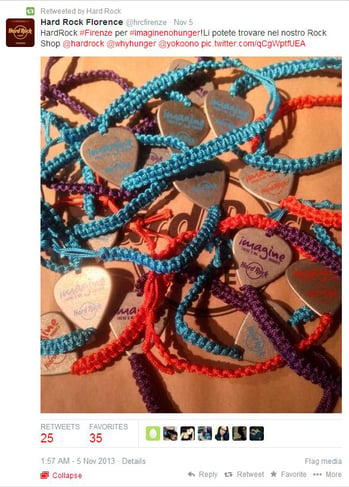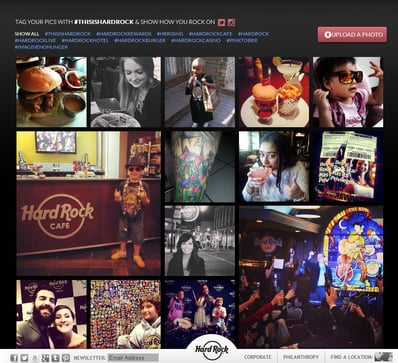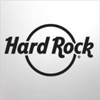Social Strategies of a Top Brand

Managing an enterprise's presence on social media networks is a Herculean task.
Today's savviest marketing teams, however, are ending the meaningless chase for superficial gains (such as likes, retweets or follows) and, instead, focusing on the bigger picture - driving social change and website traffic.
Effective Empowerment
When discussing a global enterprise like Hard Rock, it's easy to dismiss their social efforts because of the countless resources they seemingly have at their disposal, but managing this worldwide initiative requires consistency, structure and trust.
Rather than managing all social accounts from its corporate headquarters, Hard Rock empowers its worldwide locations to manage their own social presences. For example, Hard Rock Hotel Cancun has a separate handle (@HRHCancun) from the Hard Rock Café in San Diego (@HardRockCafeSD) - and each are managed locally. Beyond Twitter, Hard Rock (and each of its locations) is also active on Facebook, Instagram, Pinterest, Google+, LinkedIn and other networks.
To keep brand messaging consistent, yet still localized, Kim Matlock, the senior director of digital marketing and customer relationship management at Hard Rock, and her team share content (via internal communication methods) with all of its properties and the location managers customize it from there.
Each location sticks to corporate's content calendar, which includes both timely messaging and evergreen content (not time sensitive). An example of a deadline-driven promotion is "Imagine No Hunger," which Hard Rock runs every year in November and December (the namesake is a play on John Lennon's iconic "Imagine" song).
Since there are so many moving parts to this campaign that combats childhood hunger and poverty, Matlock's team creates a digital guide for everything a Hard Rock location would need to stay on-brand and promote the promotion effectively. The guide includes relevant hashtags, graphics, messaging and more for each location to roll out during specified times. Hard Rock even distributes this material to partners like, for this campaign, Yoko Ono who follows the rules, tweeting pre-approved infographics, for example.
Smart Scheduling
Yoko Ono isn't the only one following Hard Rock's corporate guidelines. Its individual locations, however, localize their messaging. For example, in image A, marketers for Hard Rock Florence promote "Imagine No Hunger" bracelets in their native tongue. By empowering local representatives, Hard Rock eliminates the chance of translating the messaging incorrectly or not following local or cultural norms.

On-location social media management also helps when it comes to keeping different time zones straight. Of course, social media management tools can help ensure accuracy, but after using a popular solution on the market, which it found ineffective, Hard Rock chose to leverage the scheduling capabilities of the platforms themselves, when possible. Recently, Matlock's team started to schedule Facebook posts directly from the social network.
While Hard Rock appreciates this capability, Matlock hasn't been happy about Facebook's algorithm change that dramatically reduces organic reach. Instead of chasing their tails, Hard Rock has put more resources into Instagram (also Facebook owned) and started using a platform called Olapic (see image B) to increase engagement on its own digital property by managing, curating and showcasing customers' visual content on its website HardRock.com.

Big Brand Takeaways
At the end of the virtual day, top brands like Hard Rock are creating quality content that engages their audiences in meaningful ways and finding ways to bring back customers to their websites, where the chase for conversations and conversions really begins.

Subscribe to Our Newsletter!
Latest in Social Media










